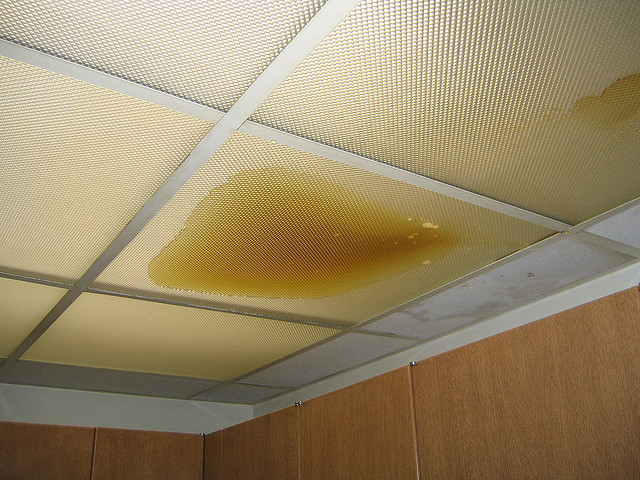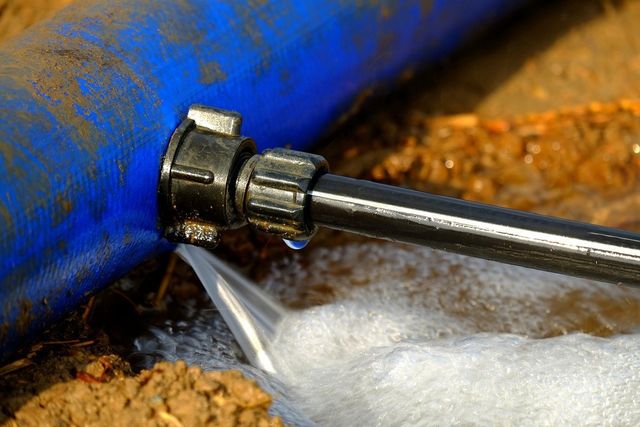They are making a few good points on Leaking water lines as a whole in this article down the page.

Early discovery of dripping water lines can mitigate a prospective calamity. Some little water leaks might not be visible.
1. Take A Look At the Water Meter
Every house has a water meter. Examining it is a proven manner in which aids you find leakages. For starters, shut off all the water sources. Guarantee no one will flush, use the faucet, shower, run the cleaning equipment or dishwasher. From there, most likely to the meter and also watch if it will alter. Considering that no one is using it, there need to be no motions. If it moves, that indicates a fast-moving leak. If you detect no adjustments, wait a hr or 2 and inspect back once again. This implies you might have a slow leakage that could even be below ground.
2. Check Water Usage
Examine your water bills and track your water usage. As the one paying it, you need to discover if there are any kind of disparities. If you find sudden changes, despite your usage coinciding, it means that you have leaks in your plumbing system. Keep in mind, your water costs must fall under the very same range each month. An abrupt spike in your costs indicates a fast-moving leakage.
Meanwhile, a constant boost each month, even with the same behaviors, reveals you have a sluggish leak that's likewise slowly intensifying. Call a plumber to completely examine your property, especially if you feel a cozy location on your floor with piping beneath.
3. Do a Food Coloring Test
When it comes to water usage, 30% comes from toilets. If the shade in some way infiltrates your bowl throughout that time without flushing, there's a leak between the tank and bowl.
4. Asses Exterior Lines
Don't neglect to check your exterior water lines as well. Should water permeate out of the connection, you have a loosened rubber gasket. One small leak can lose bunches of water as well as spike your water costs.
5. Analyze the circumstance and also evaluate
House owners should make it a practice to examine under the sink counters and also even inside cupboards for any type of bad odor or mold and mildew development. These two red flags suggest a leak so timely focus is called for. Doing regular evaluations, also bi-annually, can conserve you from a significant problem.
Examine for discolorations and also compromising as the majority of pipes as well as devices have a life span. If you believe leaking water lines in your plumbing system, don't wait for it to intensify.
Early discovery of leaking water lines can reduce a potential catastrophe. Some small water leakages might not be noticeable. Checking it is a guaranteed method that assists you uncover leakages. One little leakage can waste loads of water as well as surge your water expense.
If you presume leaking water lines in your plumbing system, don't wait for it to rise.
How to Know If Your Home Has a Hidden Leak
Water Meter Reveals Inexplicable Water Usage
If you’d like to test whether or not there’s a leak somewhere in your home, you can do this using your water meter. Here is how to conduct the test:
Don’t use any water in your home for at least 30 minutes; this also means not turning on faucets or water-using appliances.
Go outside, and check your water meter for activity.
If your water meter shows that there was activity, even though no one was using any water, this proves that there is a leak in your home.Visible Mold or Mildew Growth
Leaks behind walls create moist, dark environments that allow mold and mildew to grow and thrive. Eventually, you might see mold growth forming on the wall closest to a hidden leak.
If mold is growing in an area that receives a high amount of moisture, such as a bathroom, it may simply be an indication that better ventilation is needed. However, if you see mold growth on a wall or the ceiling in an area where you would not expect, you probably have a hidden leak.
Musty, Mildew Odor
Sometimes you might not be able to see the mold or mildew that is growing as a result of a leak. However, the smell can give the problem away just as easily. If you catch a whiff of something musty, there’s a good chance that old water is collecting somewhere in your home that you can’t see.
Stained/Warped Walls, Ceilings, or Floors
When your home soaks up water, a variety of red flags can become visible, including ceiling stains, bubbling drywall, warped walls, and sagging floors. While these issues can be caused by excess humidity, they can also be signs that a pipe or plumbing connection has started leaking behind your walls.
Inexplicably High Water Bill
After a while, you get a general sense for what your water bill should be. If you own a pool or sprinkler system, your bill will tend to be higher during summer. However, if you receive a water bill that seems especially high, and you can’t figure out what caused it, then you may have a hidden leak somewhere that’s increasing your bill.
https://www.plumbingjoint.com/blog/2019/july/how-to-know-if-your-home-has-a-hidden-leak/

We had been introduced to that editorial on Detecting hidden plumbing leaks through an acquaintance on a different website. For those who enjoyed our post if you please do not forget to share it. Many thanks for your time invested reading it.